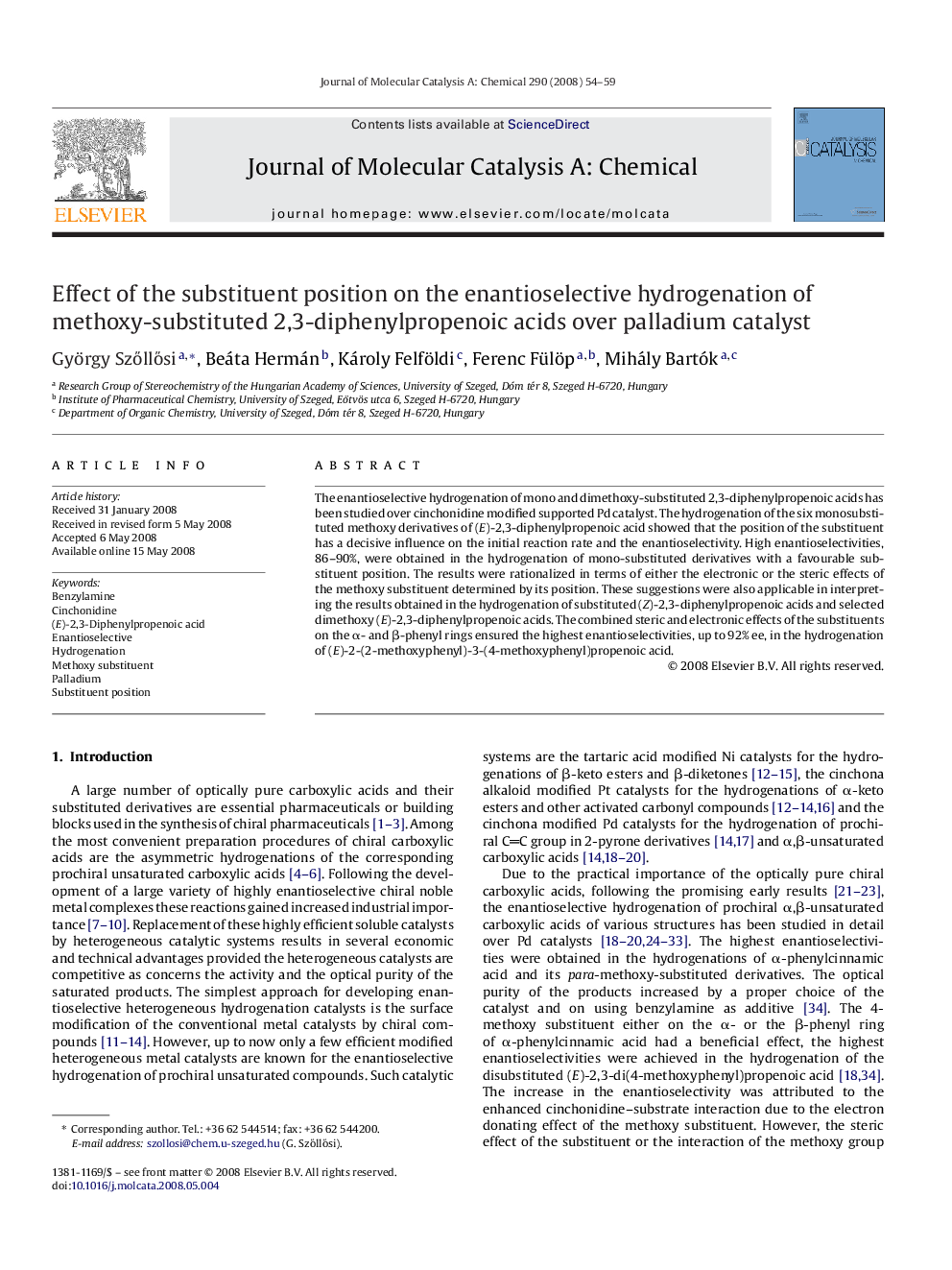| Article ID | Journal | Published Year | Pages | File Type |
|---|---|---|---|---|
| 68215 | Journal of Molecular Catalysis A: Chemical | 2008 | 6 Pages |
The enantioselective hydrogenation of mono and dimethoxy-substituted 2,3-diphenylpropenoic acids has been studied over cinchonidine modified supported Pd catalyst. The hydrogenation of the six monosubstituted methoxy derivatives of (E)-2,3-diphenylpropenoic acid showed that the position of the substituent has a decisive influence on the initial reaction rate and the enantioselectivity. High enantioselectivities, 86–90%, were obtained in the hydrogenation of mono-substituted derivatives with a favourable substituent position. The results were rationalized in terms of either the electronic or the steric effects of the methoxy substituent determined by its position. These suggestions were also applicable in interpreting the results obtained in the hydrogenation of substituted (Z)-2,3-diphenylpropenoic acids and selected dimethoxy (E)-2,3-diphenylpropenoic acids. The combined steric and electronic effects of the substituents on the α- and β-phenyl rings ensured the highest enantioselectivities, up to 92% ee, in the hydrogenation of (E)-2-(2-methoxyphenyl)-3-(4-methoxyphenyl)propenoic acid.
Graphical abstractThe position of the methoxy substituent has crucial influence on the enantioselective hydrogenation of the methoxy-substituted 2,3-diphenylpropenoic acids over cinchonidine modified palladium catalyst. The highest ee, up to 92%, was obtained in the hydrogenation of (E)-2-(2-methoxyphenyl)-3-(4-methoxyphenyl)propenoic acid due to combined favourable steric and electronic effects of the substituents. Figure optionsDownload full-size imageDownload as PowerPoint slide
